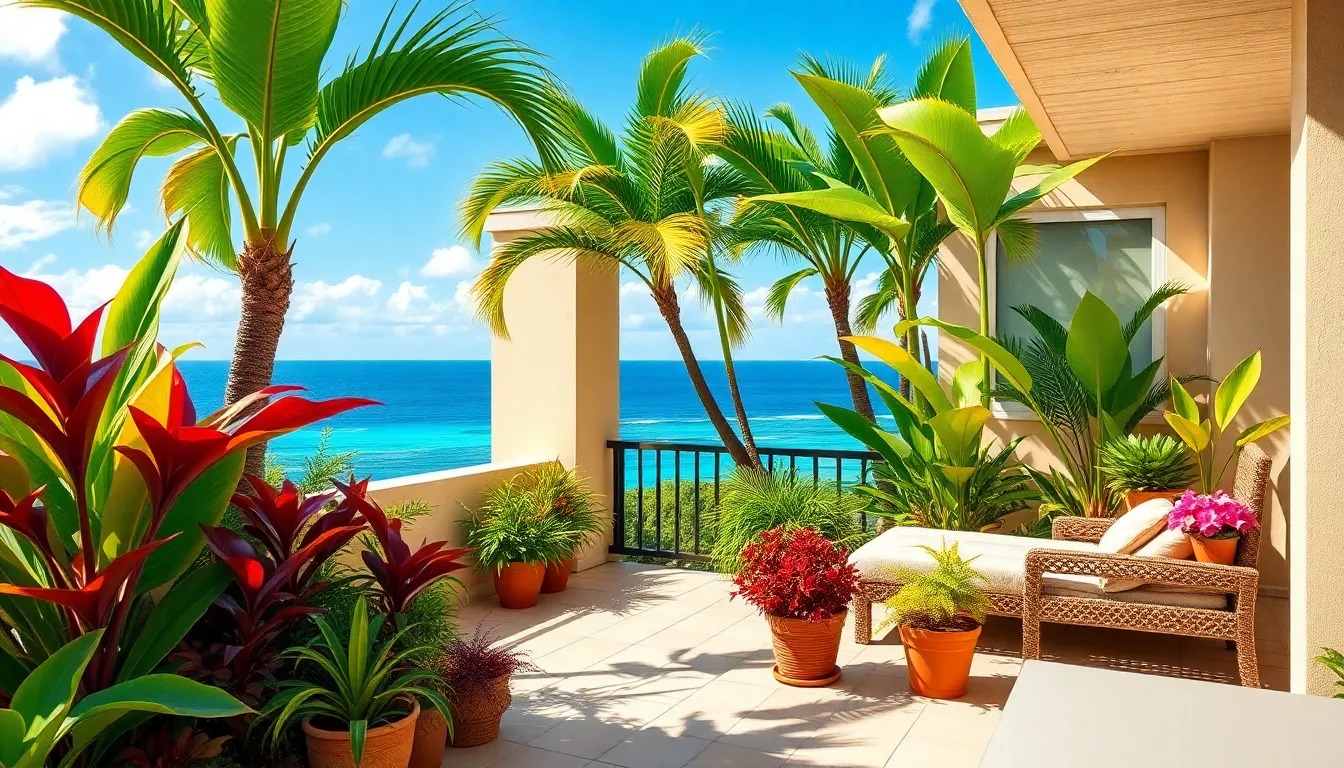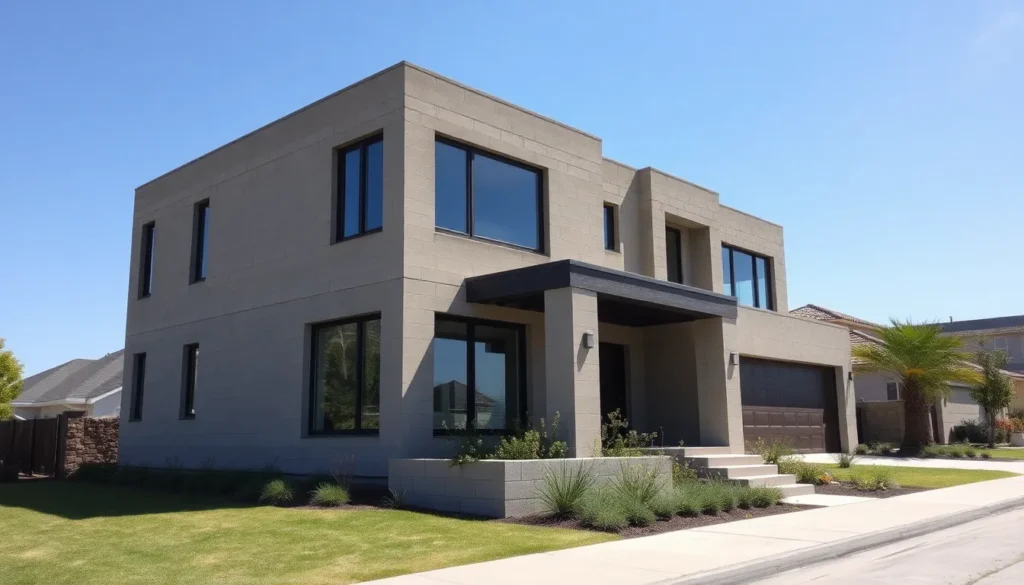Dreaming of sandy beaches and swaying palm trees? Hawaii’s paradise comes with a price tag that might make your wallet weep. While the sunsets are breathtaking the cost of living can leave you gasping for air. From rent to groceries every month in this tropical haven can feel like a mini vacation for your budget—just not the kind you want.
Table of Contents
ToggleOverview of Cost of Living in Hawaii Per Month
Living in Hawaii presents a unique financial landscape that reflects its appealing environment. Monthly expenses vary significantly based on factors such as location, lifestyle choices, and family size. Housing costs constitute a major part of the budget, with the average rent for a one-bedroom apartment reaching approximately $2,400 in urban areas like Honolulu.
Groceries also contribute to living expenses, with residents spending around $550 monthly on food. Local markets and imported goods can drive prices higher compared to the mainland U.S. Utilities bring additional costs, averaging $300 per month for basic services such as electricity, water, and gas.
Transportation expenses cannot be overlooked. Monthly public transportation passes typically cost $70, while gasoline prices often fluctuate around $4.50 per gallon. Health insurance premiums average $550 monthly, affecting overall financial planning.
Dining out adds another layer of expense. A meal at a mid-range restaurant may cost approximately $20 per person, which adds up quickly for families. Leisure activities and entertainment expenses vary; however, on average, residents allocate around $200 monthly for such pursuits.
Understanding these monthly costs enables better financial planning for those considering a move to Hawaii. Living on the islands can indeed feel like a dream, yet it demands careful budgeting to manage the higher-than-average costs that accompany such a beautiful location.
Housing Expenses

Housing expenses significantly impact the overall cost of living in Hawaii. Prospective residents must carefully evaluate their options between renting and buying a home.
Renting vs. Buying a Home
Renting offers flexibility, while buying provides equity. Many people opt for rentals to enjoy island living without long-term commitments. Renting typically involves a security deposit, often equivalent to one month’s rent, and leases usually range from six to twelve months. In contrast, buying a home requires a substantial down payment and ongoing mortgage costs. Real estate prices can be steep, influencing the decision for many. Those who choose to rent often face fluctuating market conditions, making it essential to assess neighborhood trends and rental availability.
Average Rent Prices
Average rent prices vary based on location and type of dwelling. For a one-bedroom apartment in urban areas like Honolulu, average monthly rent hovers around $2,400. This figure can increase significantly for properties with ocean views or luxury amenities. In suburban settings, average rent falls to about $1,800, providing more affordable options. Room rentals and shared housing can help mitigate costs, with prices ranging from $800 to $1,200 per room. Understanding these averages allows individuals to budget effectively and choose their living arrangements wisely.
Utilities and Services
Utilities in Hawaii contribute significantly to monthly expenses. Understanding specific costs helps manage budgeting effectively.
Electricity and Water Costs
Electricity bills in Hawaii often average around $200 monthly, driven by high rates compared to the mainland. Water costs add approximately $60 to the monthly budget, influenced by individual consumption levels and local rates. Energy conservation measures can lower electricity usage, benefiting overall monthly expenses. Households may find lower rates in certain areas, depending on utility companies and infrastructure. Understanding these variables is crucial for planning financial commitments when considering a move to the islands.
Internet and Cable Expenses
Internet services typically range from $60 to $100 monthly, depending on speed and provider options available. Cable packages add another $100 or so, based on channel selection and additional features. Many residents opt for streaming services as alternatives, which can offer cost savings. Bundled services often provide discounts but vary significantly by location. Evaluating different providers ensures that residents find the best deals while enjoying connectivity in Hawaii.
Food and Groceries
Monthly food expenses in Hawaii reflect the islands’ unique geographical situation and market dynamics. Grocery prices often exceed the national average, prompting residents to seek cost-effective strategies.
Average Grocery Prices
Grocery prices in Hawaii average around $550 per month. Basic staples like milk, bread, and eggs typically cost more due to importation. For example, a gallon of milk costs approximately $5. A loaf of bread averages $4, while a dozen eggs is around $4. Seasonal produce exhibits significant price variations; local fruits may be cheaper, but imported options remain costly. Consumers frequently turn to farmers’ markets for local options, helping reduce expenses in some categories. Shopping at budget-friendly stores can also provide an opportunity to manage costs.
Eating Out Costs
Eating out regularly in Hawaii can strain budgets. A meal at a mid-range restaurant typically costs about $20 per person. Fast food options, while cheaper, usually hover around $10. Dining out for a family of four quickly adds up, reaching approximately $80 for a basic meal. In tourist areas, prices increase, with similar meals costing more than average. Those seeking a more affordable experience often turn to food trucks or local diners, offering quality meals at lower prices. Prioritizing local favorites can enhance the dining experience while keeping expenses manageable.
Transportation Costs
Transportation costs in Hawaii vary significantly, impacting monthly living expenses. Public transport and gasoline prices play a crucial role in budgeting for residents.
Public Transportation Options
Bus services offer affordable public transportation opportunities, with monthly passes costing about $70. The bus systems operate extensively across major islands, making it convenient for residents to commute. While this option remains budget-friendly, some still find ride-sharing services appealing for flexibility. Alternative transportation modes, like biking and walking, also provide effective ways to navigate urban areas.
Gas Prices and Car Ownership
Gasoline prices hover around $4.50 per gallon, influencing car ownership decisions. Many choose to own a vehicle for convenience despite the high fuel costs. Monthly expenses for insurance and maintenance can add $200 or more to budgets. Owners often face additional costs, such as registration fees and parking. Opting for fuel-efficient cars can help mitigate some of these expenses.
Health Care Costs
Health care costs in Hawaii represent a significant portion of monthly living expenses. Residents face high premiums, which average around $550. Additionally, co-pays and deductibles can further increase out-of-pocket spending.
Insurance and Medical Expenses
Insurance premiums within the state often exceed national averages due to limited competition. Many choose private insurance plans, while some qualify for Med-QUEST, Hawaii’s Medicaid program. Routine check-ups and preventive care typically cost between $25 and $100, depending on the provider. Serious health issues can escalate costs rapidly, necessitating comprehensive coverage for financial security. Keeping track of monthly expenses related to insurance and medical care is essential for budgeting effectively.
Average Prescription Costs
Prescription medication expenses in Hawaii also tend to be higher than on the mainland. The average cost for essential medications may range from $10 to $100, heavily depending on the drug’s type and dosage. Commonly prescribed medications often include maintenance medicines for chronic conditions, which can place a strain on monthly budgets. Many residents utilize discount programs and generics to lessen these financial burdens. In some cases, regular consultation with local pharmacies provides additional options for reducing costs associated with prescription medications.
Entertainment and Leisure Expenses
Monthly entertainment costs in Hawaii generally range from $150 to $300. This range varies based on personal preferences and lifestyle choices. Movie tickets typically cost around $15 each, while going to a concert or event can average $60 to $100 per person. Many residents opt for seasonal passes at local attractions, allowing for additional savings on regular visits.
Average Monthly Entertainment Costs
Count on spending approximately $200 for entertainment and leisure activities each month. Diversions include dining out, attending live shows, and enjoying recreational events. Movie nights can add up, especially when considering concession prices. For those who enjoy the nightlife, bars and clubs often charge around $10 for drinks. Local festivals and cultural events also provide low-cost options, typically under $20, offering a taste of Hawaiian culture while keeping costs manageable.
Outdoor Activities and Parks
Outdoor activities in Hawaii present budget-friendly entertainment options. Access to national and state parks allows for hiking, swimming, and other recreational activities without entrance fees. Many hiking trails offer stunning views, with family-friendly parks providing picnic spots and playgrounds for children. Beach access remains free, enabling locals to enjoy sunbathing, surfing, and swimming. An outdoor outing can often be both enjoyable and economical, with costs mainly related to equipment rentals or food. Local parks frequently host free events, reinforcing community engagement and social interactions.
Living in Hawaii offers breathtaking beauty but comes with a hefty price tag. Monthly expenses can quickly add up and require careful budgeting. From housing and groceries to utilities and transportation, every aspect of life on the islands demands financial consideration.
For those contemplating a move to Hawaii, understanding these costs is essential. It’s not just about the allure of palm trees and ocean views; it’s about finding a balance between lifestyle choices and financial realities. With strategic planning and a clear grasp of the cost of living, residents can enjoy the paradise of Hawaii without feeling overwhelmed by expenses.













